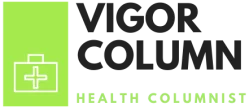
Research suggests use of AI to predict patients with after-surgery pain
Washington [US] : An ongoing exploration has discovered that Artificial insight can be utilized to anticipate patients at higher danger of torment after the medical procedure.
The exploration was introduced at the ANESTHESIOLOGY® 2020 yearly gathering.
The investigation has decided the aftereffects of customized torment the board plans utilizing non-narcotic other options.
A few patients experience more serious torment after medical procedure and need higher dosages of narcotics for longer timeframes, which expands their danger for narcotic maltreatment problem. By knowing which patients are at higher danger for extreme post-careful torment, doctor anesthesiologists can make a sedation plan utilizing non-narcotic other options -, for example, nerve squares, epidurals and different meds – to all the more successfully address torment and lessen the requirement for narcotics.
Presently, doctors use tedious polls to distinguish patients at higher danger for serious post-careful torment, getting some information about their set of experiences of tension, rest quality and misery. In this examination, analysts looked for a quicker, more compelling strategy utilizing AI, where a framework learns and develops dependent on information it is given.
They made three AI models that investigated patients’ electronic clinical records, which distinguished that more youthful age, higher weight file, female sexual orientation, previous agony and earlier narcotic use were the most prescient elements of post-careful torment.

“We intend to coordinate the models with our electronic clinical records to give a forecast of post-careful agony for every patient,” said Mieke A. Soens, M.D., lead creator of the examination and an anesthesiologist at Brigham and Women’s Hospital and anesthesiology educator at Harvard Medical School, Boston. “On the off chance that the patient is resolved to be at high danger for serious post-careful agony, the doctor anesthesiologist would then be able to change the patient’s sedation intend to expand non-narcotic torment the board methodologies that would diminish the requirement for narcotics after medical procedure.”
In the two-section study, analysts took a gander at information from 5,944 patients who had a wide assortment of medical procedures, including gallbladder evacuation, hysterectomy, hip substitution and prostate medical procedure. Of those, 1,287 (22 percent) had burned-through 90 morphine milligram same (MME) in the initial 24 hours after medical procedure, which is viewed as a high portion.
In the initial segment of the investigation, they utilized 163 likely factors to foresee high torment post-medical procedure, in view of a writing search and conference with specialists. From that point they made three AI calculation models (strategic relapse, arbitrary backwoods and counterfeit neural organizations) that mined the patients’ clinical records and shaved the 163 indicator factors down to those which most precisely anticipated patients’ torment seriousness and potential narcotic needs after medical procedure.
In the subsequent part, they contrasted what the models anticipated with genuine narcotic use in those equivalent patients. They decided every one of the three models had comparative prescient exactness in general: 81 percent for strategic relapse and arbitrary backwoods techniques and 80% for counterfeit neural organizations. That implies the models precisely recognized which individuals were bound to have serious agony and need higher dosages of narcotics around 80% of the time.
“Electronic clinical records are an important and underused wellspring of patient information and can be utilized adequately to upgrade patients’ lives,” said Dr. Soens. “Specifically distinguishing patients who normally need high dosages of narcotics after medical procedure is essential to help lessen narcotic abuse.”



